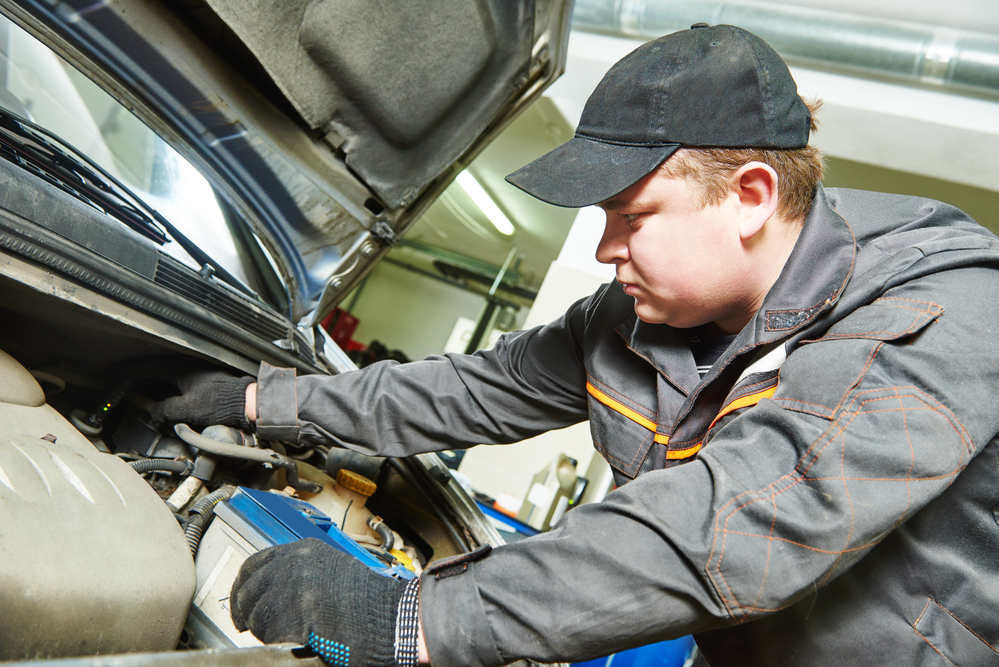Have you recently asked for estimations from local collision repair centers and saw “ADAS calibration” on the estimate? The term “ADAS calibration” has become increasingly prevalent, leaving many car owners curious about its significance during the repair process. Let’s look at what this term means and why it may be included in your auto repair estimate.
Key Takeaways
- ADAS Overview: Integrates advanced safety features like adaptive cruise control.
- Significance of ADAS Calibration: Crucial in auto body repairs for precise sensor alignment.
- When Recalibration is Needed: After collision, windshield, or suspension repairs.
- Choose Elmer’s Auto Body: Trust for comprehensive restoration. Contact our South Jersey locations for transparent estimates and prioritize safety system effectiveness.
What Does ADAS Stand For?
ADAS, an acronym for Advanced Driver Assistance Systems, represents a groundbreaking technological integration in modern vehicles. Interestingly, ADAS systems have been around since the 1970s with the introduction of anti-locking brakes and electronic stability control. However, they have become far more sophisticated.
These systems are designed not only to assist drivers but also to significantly enhance overall road safety. The range of features encompassed by ADAS is extensive, with innovations such as adaptive cruise control, lane departure warning, automatic emergency braking, and parking assistance systems working in harmony to create a safer driving experience.
What is ADAS Calibration?
ADAS calibration is a specialized and crucial procedure conducted during auto body repairs to ensure the precise alignment and calibration of the intricate sensors and cameras associated with Advanced Driver Assistance Systems. These systems rely heavily on exact measurements and alignments to function optimally. Any structural or cosmetic damage to a vehicle can compromise the effectiveness of ADAS features, making calibration an essential step in the repair process.
In essence, ADAS calibration is akin to restoring the intricate safety systems of a vehicle to their factory settings. This meticulous process guarantees that these advanced technologies operate with the same precision and accuracy as when the vehicle first rolled off the assembly line.
What Does ADAS Recalibration Involve?
ADAS recalibration is a comprehensive process that adapts to the specific make and model of a vehicle. This intricate procedure includes the following key steps:
- Diagnostic Scanning: Employing advanced diagnostic tools to identify any faults or discrepancies in the ADAS system. This step is crucial for pinpointing issues that may have arisen due to a collision or other forms of damage.
- Physical Inspection: Conducting a thorough examination of the vehicle to assess the extent of damage and identify components that may require adjustment or replacement. This step ensures that all potential issues are addressed during the recalibration process.
- Target Setup: Placing precise targets in predetermined locations around the vehicle to enable the calibration equipment to establish accurate reference points. This step is vital for achieving the desired alignment.
- Calibration Equipment: Using specialized equipment to make the necessary adjustments and align the sensors and cameras according to the manufacturer’s specifications. This precise calibration ensures that ADAS components function optimally.
- Post-Calibration Verification: Performing thorough tests and verifications to ensure that the ADAS components are functioning as intended. This step provides confirmation that the recalibration process has been successful.
When Does ADAS Recalibration Happen?
ADAS recalibration becomes necessary after specific auto body repairs that involve components or systems associated with these advanced safety features. Common scenarios that warrant ADAS recalibration include:
- Collision Repairs: If your vehicle has been involved in a collision, especially if the impact affected areas around sensors or cameras, recalibration is crucial to restore the functionality of ADAS.
- Windshield Replacement: Many vehicles integrate ADAS components into the windshield. As a result, replacing the windshield may necessitate recalibration to ensure proper alignment and functioning of these systems.
- Suspension Repairs: Any repairs or replacements to the suspension system may impact the alignment of ADAS components, making recalibration essential for optimal functionality.
Ensuring that ADAS recalibration is included in your auto body repair estimate is paramount for maintaining honesty and transparency. Furthermore, recalibration is include in your service to ensure that these safety systems continue to operate as they should. By prioritizing this crucial step, you contribute to a comprehensive and effective restoration of your vehicle’s safety features.
Contact a South Jersey Collision Repair Center Today
If your vehicle requires auto body repairs, especially those involving ADAS components, trust the experts at Elmer’s Auto Body. Our South Jersey Collision Repair Center is equipped with state-of-the-art technology and skilled technicians who understand the intricacies of modern day vehicles. Rest assured that your vehicle will receive the meticulous attention it deserves, ensuring that it is not only cosmetically restored but also technologically sound for your safety on the road.
Get in touch with one of our three South Jersey locations today to schedule your appointment or fill out the contact form.

